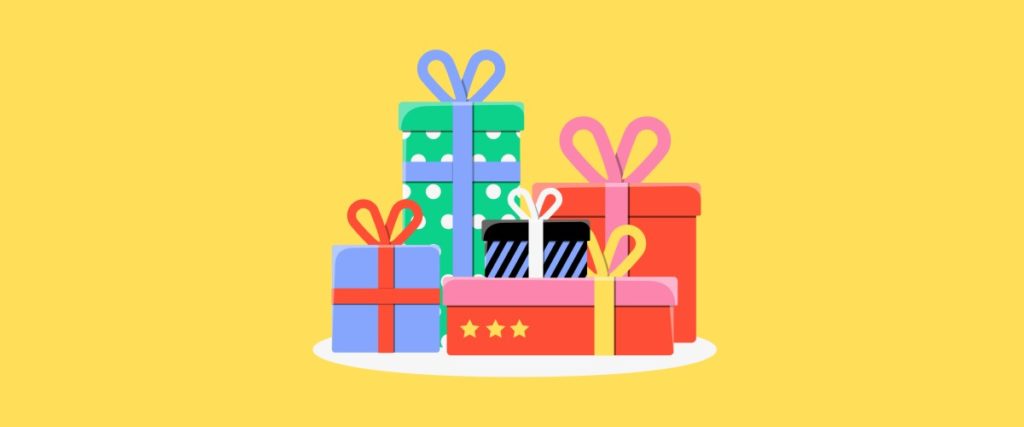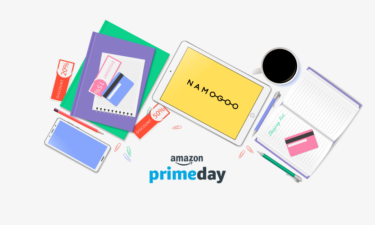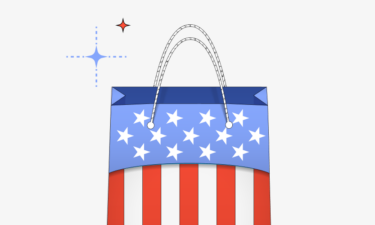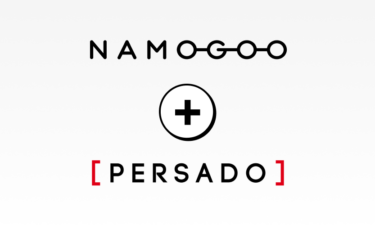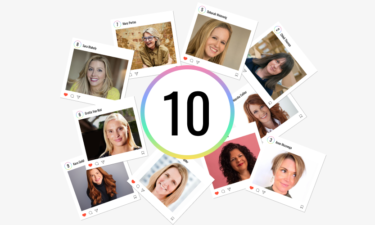Black Friday: the biggest sales day for eCommerce stores and retailers alike.
But despite its history, Cyber Weekend is no longer just a quick inventory clearout opportunity for online stores, or where profit margins go to die.
It’s a chance for eCommerce brands to attract new customers en masse. Consumers try new brands on Black Friday like no other time of the year.
In fact, eCommerce brands see a 115% increase in traffic over cyber weekend when compared to a regular weekend. And it’s up to your sales promotion strategy to convert those visitors into customers.
In this eBook, we’ll walk you through 3 foolproof ways to optimize your conversion funnel, leverage the massive increase in web traffic, and squeeze the most out of Cyber Weekend 2021 using customer intent.
Why Intent-Based Campaigns Are the Key to Your Best Holiday Season Yet
3 Intent-Based Campaigns to Run This BFCM
Plan Your Best Cyber Weekend Yet with Intent-Based Promotions
Why Intent-Based Campaigns Are the Key to Your Best Holiday Season Yet
Customer purchase intention is the single most important customer variable to measure and take action against in eCommerce.
Measuring and taking action on customer intent, gives you the power to:
- Deliver promotions only to shoppers that have an intention to buy.
- Offer the minimum discount needed, or none at all, to convert each individual shopper.
- Serve the right conversion incentive to each shopper to trigger them to buy.
In doing so, you’ll be able to personalize the customer experience, improve conversion rates and profit margins, build brand equity, and ultimately drive customer lifetime value.
Especially during the major Black Friday/Cyber Monday shopping events, when thousands of brands are competing for the attention of your target shoppers, intent-based marketing gives you a competitive edge to rise above the crowd and grab those conversions for significantly better results.
Consider this example to illustrate how intent-based marketing can help you achieve your best Cyber Weekend yet.
Within each segment of your customers, there are countless sub-segments — right down to individual, single-customer segments based on their customer demographic, psychographic, and behavioral data.
Let’s take two potential target customers for the workwear brand, Carhartt: Mike and Adam. They’re both:
- 41-year-old men living in the same city in the US (demographics)
- Contractors starting their own businesses building residential homes (psychographics)
- First-time visitors to Carhartt’s website from the same paid search campaign through Google Ads (behavioral)
- In the consideration stage of the customer journey (behavioral).
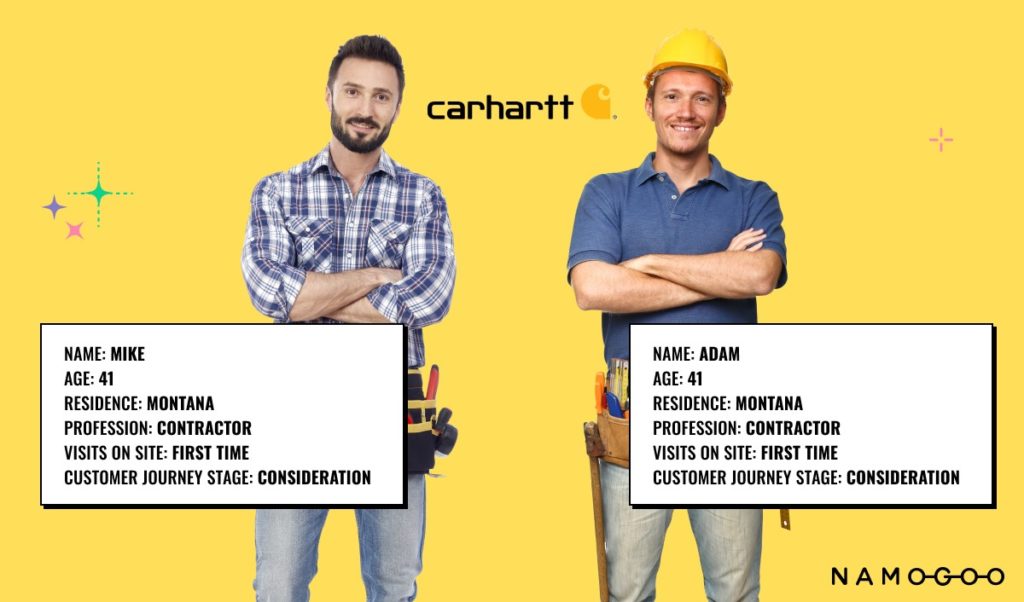
The Google Ad targeting was clearly successful in driving both of them to Carhartt’s eCommerce store. But consider what happens when we differ in purchase intention:
- Mike’s customer purchase intent is high, and his behavioral analytics suggest that he’s not particularly price sensitive. He likes the Carhartt brand, and it occurred to him on Black Friday that he might need some new work gear.
- Adam’s purchase intention is somewhere between informational and transactional (falling near “medium” on a scale) as he has been shopping around at different brands looking for the best BFCM deal. His behavioral data suggests he is more price sensitive.
In this case, Carhartt would be leaving valuable revenue and brand equity on the table by giving Mike the same onsite promotion as they presented to Adam.
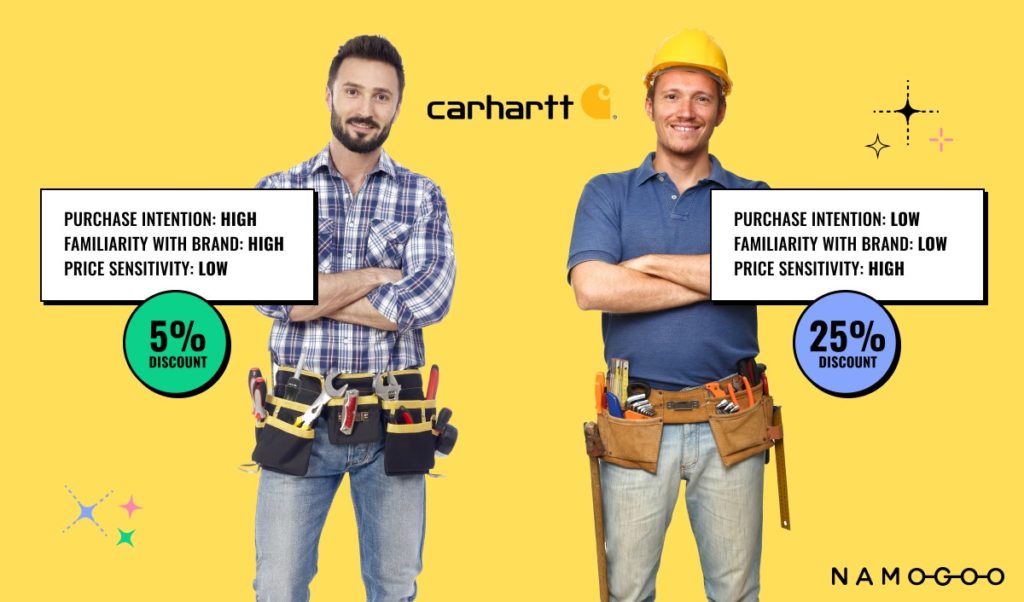
Mike might have converted with a minor discount, and Adam may have needed a steeper offer that made him feel he was getting the best deal.
This is just one example of a scenario that happens across hundreds of thousands, if not millions of sessions on your online store. Every single visitor that lands on your site, no matter their customer segment, has individual behaviors and triggers.
If you treat them all the same based on their customer segment without considering intent, you’ll leave conversions, margin, brand equity, and customer lifetime value on the table.
And on Cyber Weekend? Your competitors will scoop them right up.
3 Intent-Based Campaigns to Run This BFCM
The scenario above with Mike and Adam is happening across millions of eCommerce browsing sessions every single minute.
Measuring each individual visitor’s intent and serving the minimum promotion, messaging, and customer experience they need in light of their intent signals can help you not only convert them, but maximize the potential of every. single. session. during Black Friday.
Here are three intent-based campaigns to run to do just that. The strongest promotion strategy for Black Friday runs all three of these promotions together.
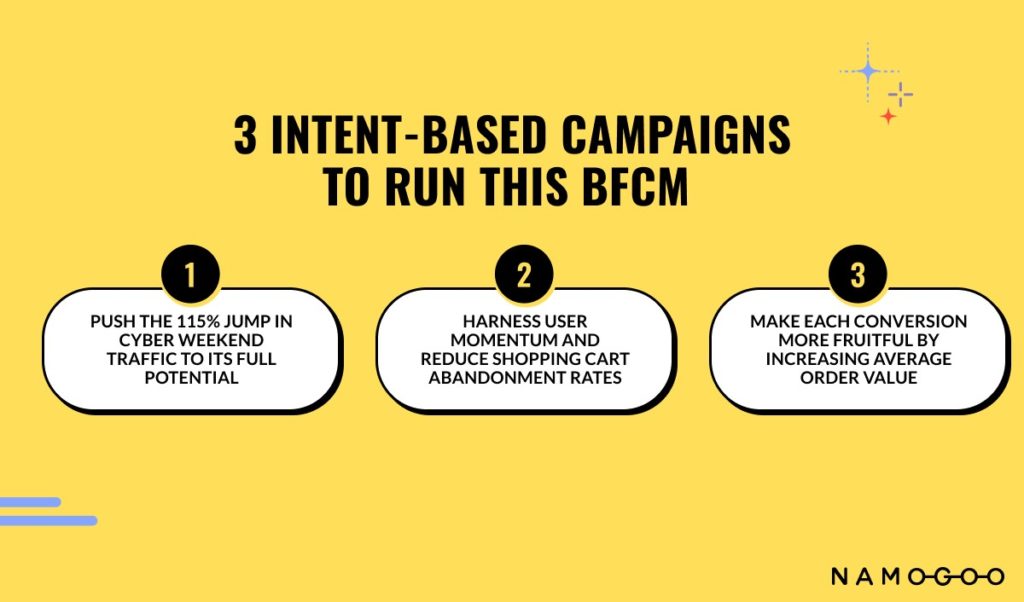
#1. Push the 115% Jump in Cyber Weekend Traffic To Its Full Potential
Campaign Goal: Improve Conversion Rate
Benchmark: Look for an increase in conversation rate between 7-15% with a simultaneous reduction in average discount (a win/win)
Data from over 2 billion weekly sessions to top eCommerce sites shows that traffic consistently spikes during Cyber Weekend.
In fact, the four days from Black Friday to Cyber Monday consistently result in some of the highest traffic days every year for our eCommerce partners.
When compared to a regular, non-holiday weekend, eCommerce stores see an average of over a 115% increase in web traffic sessions over the past three years.

More traffic is good, but you don’t want those additional sessions to remain just that: a spike in web traffic.
Every individual who lands on your site, especially during the biggest sales event of the year, is a potential customer.
You want to push each session to its full potential by taking specific, strategic measures to convert those would-be customers.
But you don’t want to convert them at any cost. By leveraging Intent-Based Promotions, you’ll be able to serve the exact minimum promotion to each individual customer to get get them to buy.
Note: Namogoo customers have seen conversion rate uplifts of 7-15% by using ai-powered behavioral segmentation through Intent-Based Promotions:

For example, this Intent-Based Promotion user improved their conversion rates by more than 14% shortly after launching their first campaign.
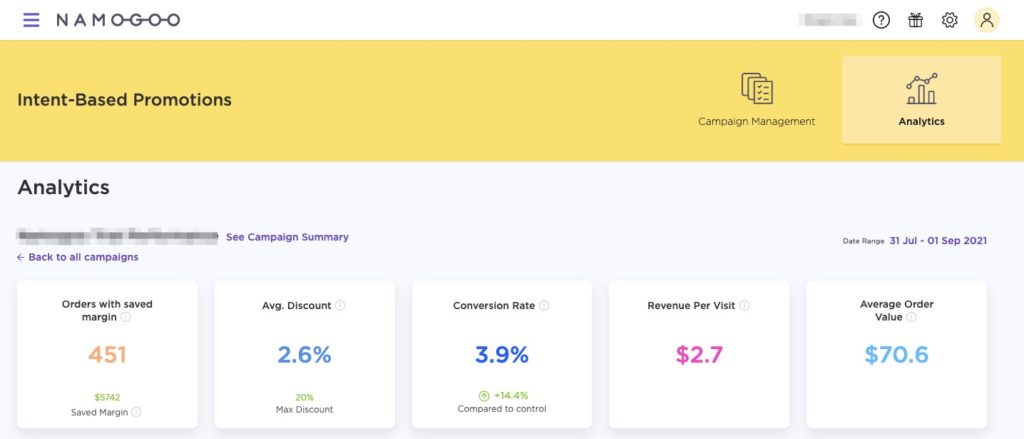
If you see 50,000 sessions over the course of the weekend, this could result in hundreds of additional new customers that you can now nurture into lifelong fans of your brand.
How to Do It
Setting up an Intent-Based Promotion campaign with a conversion goal is easy.
Step 1: Request access to Intent-Based Promotions and start a new campaign. Select the “Increase Conversions” Goal:
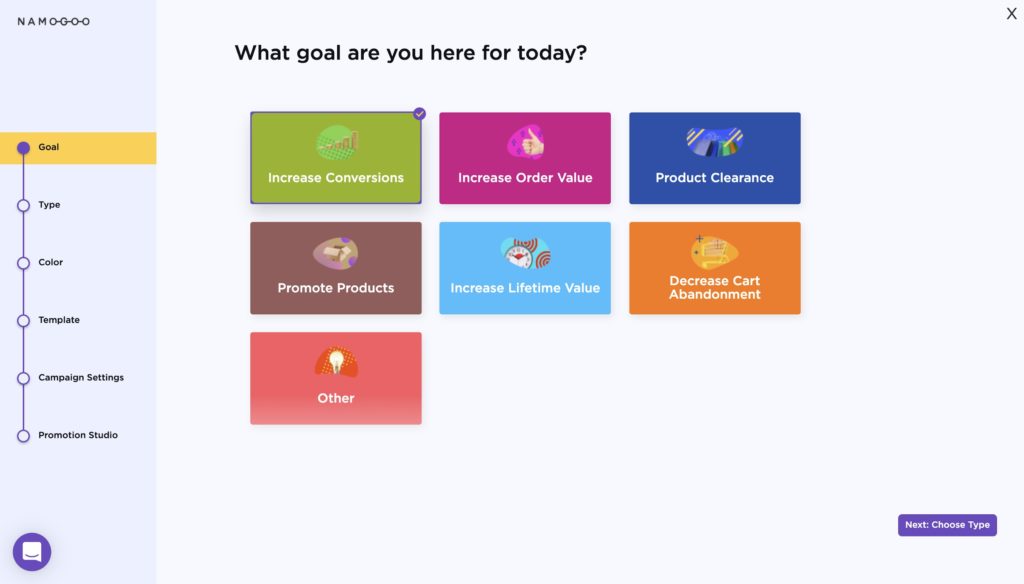
Step 2: On the Choose Campaign Type screen, select “Discount”

Choose your template and main color, or choose to fully customize your campaign.
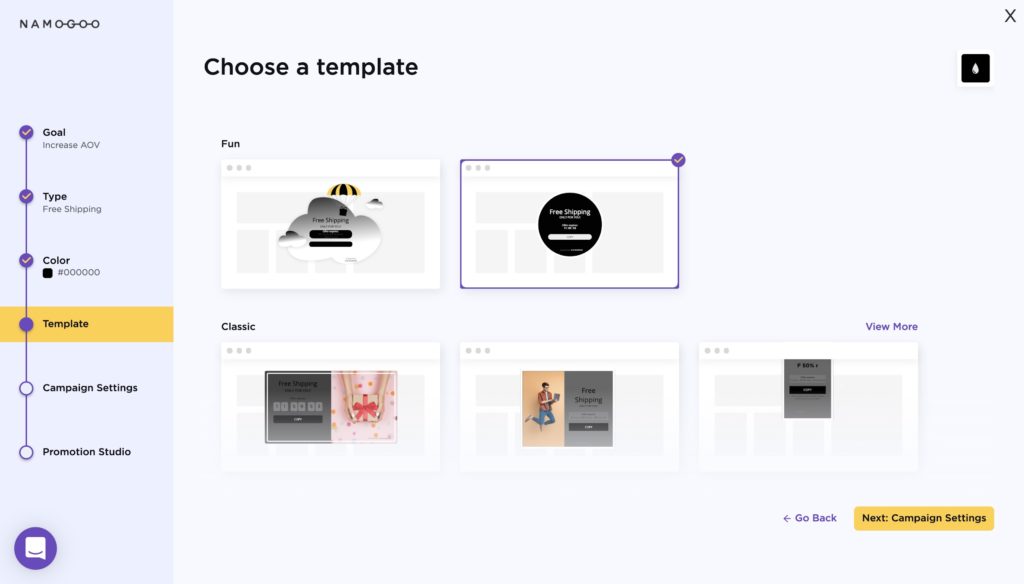
Step 3: Input the discount range you worked out for your Black Friday/Cyber Monday promotion strategy.
For Cyber Weekend, you still want the minimum discount to be generous, as the influx of visitors are looking for a deal. But with Intent-Based Promotions, you don’t need to offer your best discount to everyone regardless of whether they needed it to convert.
So set your minimum discount to somewhere around 5-15 percentage points lower than your maximum discount.
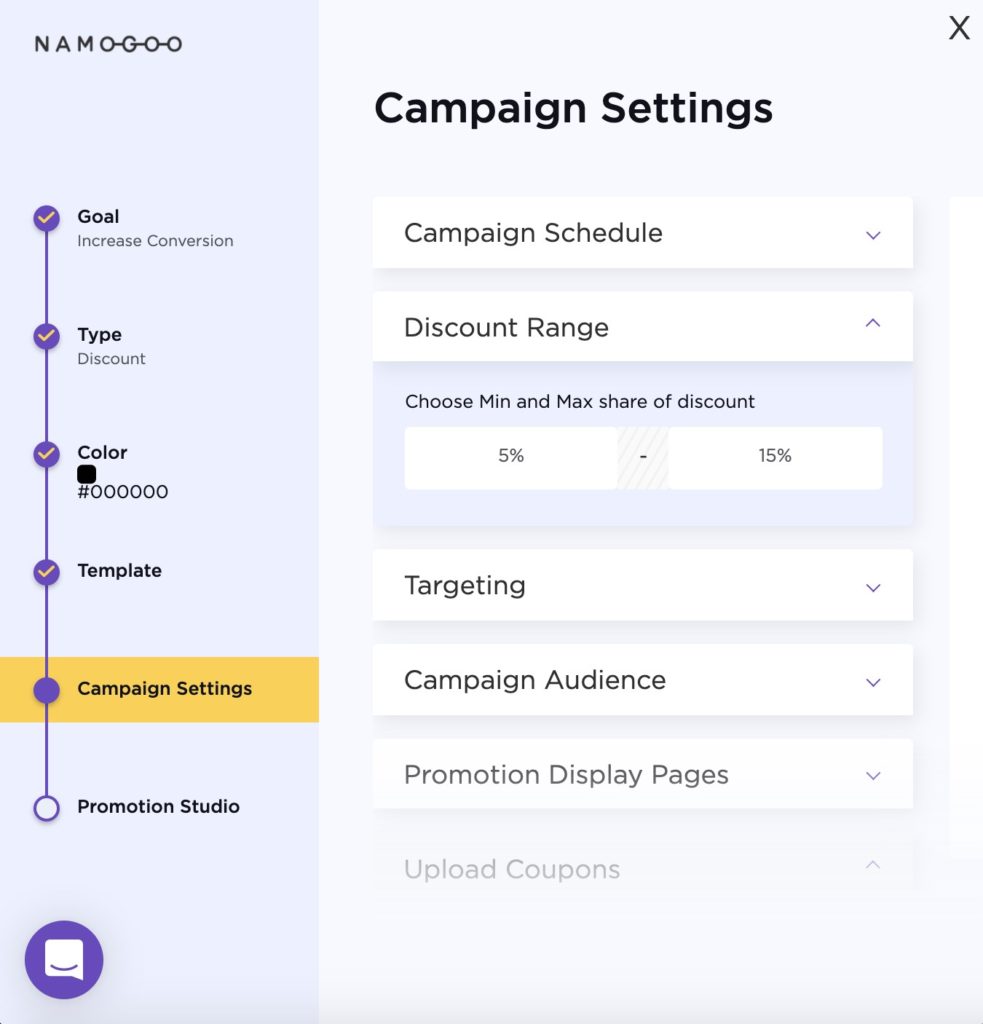
Tip : Use the profitability calculator to determine your maximum discount per channel, giving consideration to other factors such as ad spend, affiliate commissions, and margins.
Step 4: Set the Campaign Audience
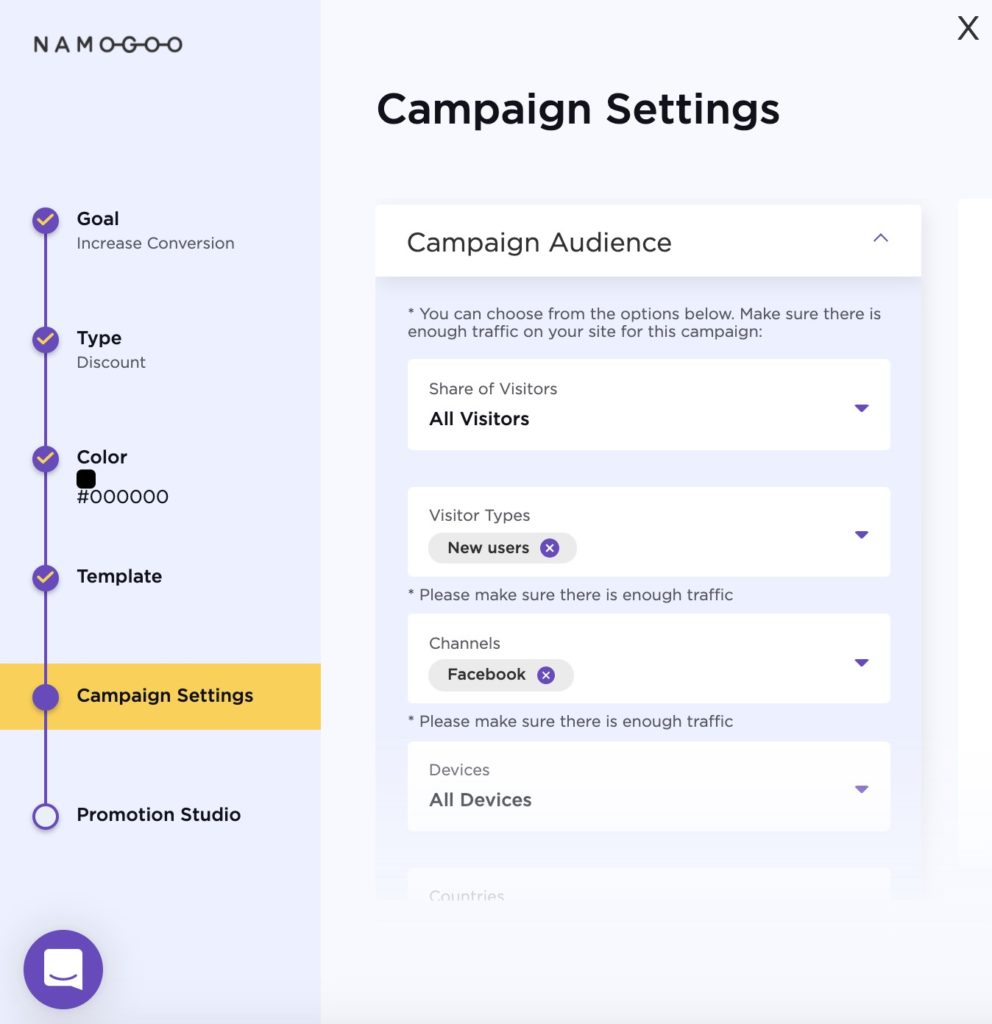
Tip: For simplicity, include both new and returning users in your campaign audience.
Step 5: Select the Promotion Display Pages you want your campaign to display on.
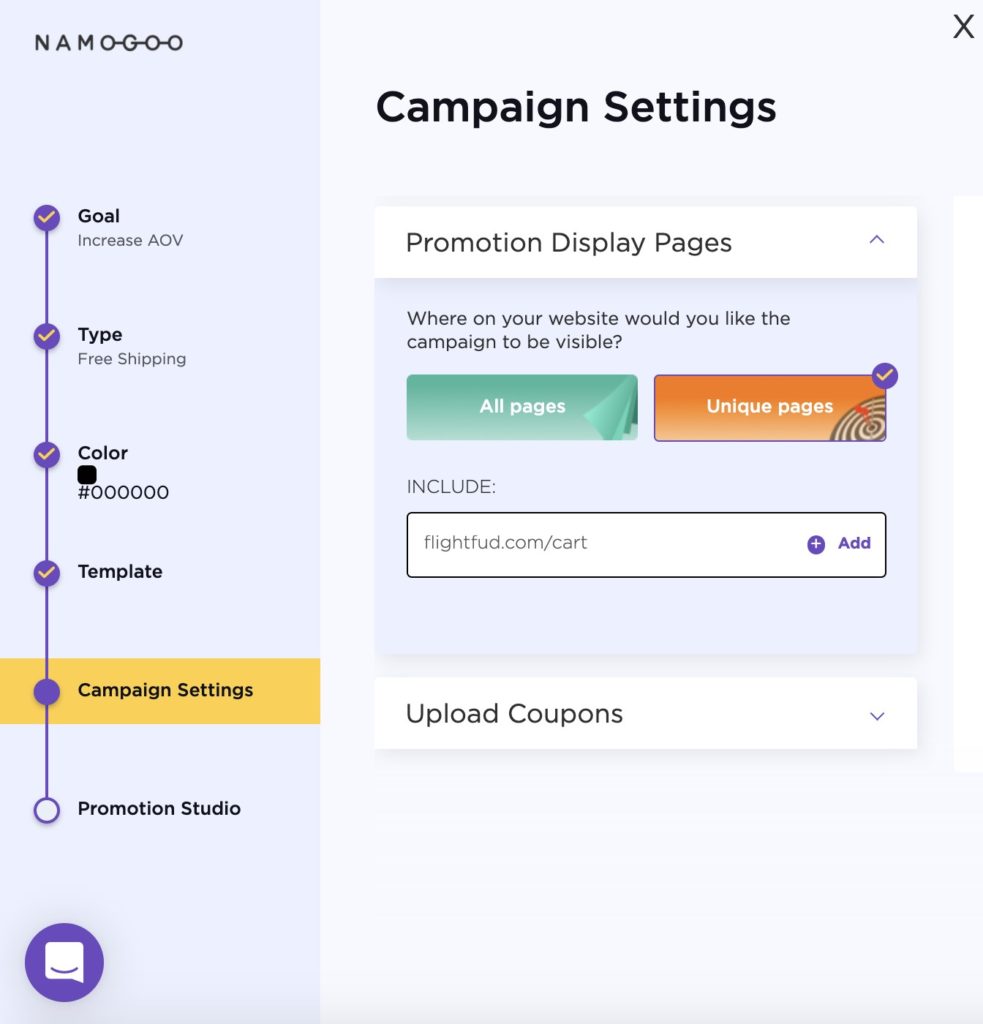
Tip: Reduce abandoned sessions when the visitor is most likely to bounce by displaying the campaign on all pages
Step 6: Customize the modal by writing Black Friday / Cyber Monday specific copy, and schedule for Cyber Weekend.
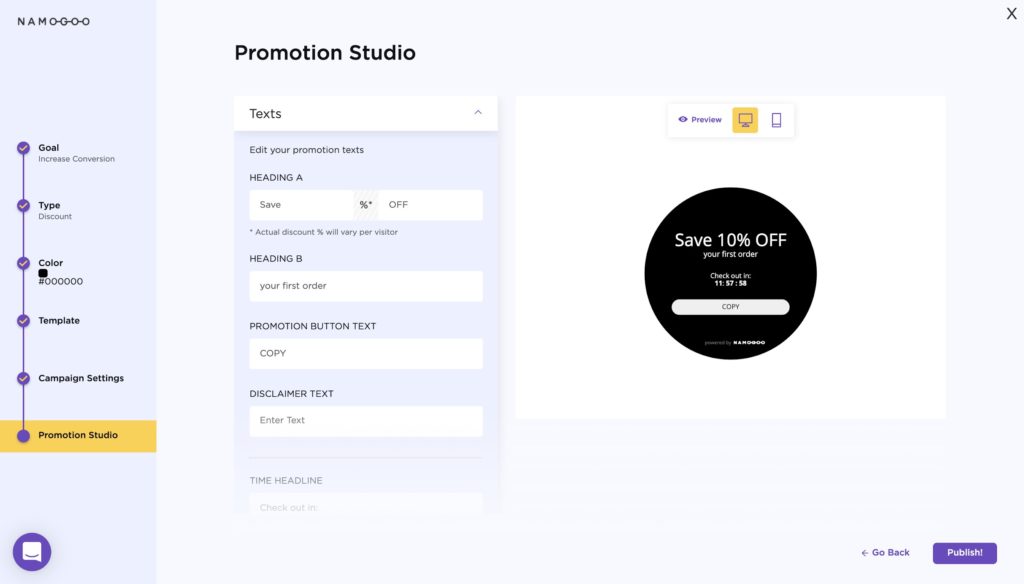
Preview
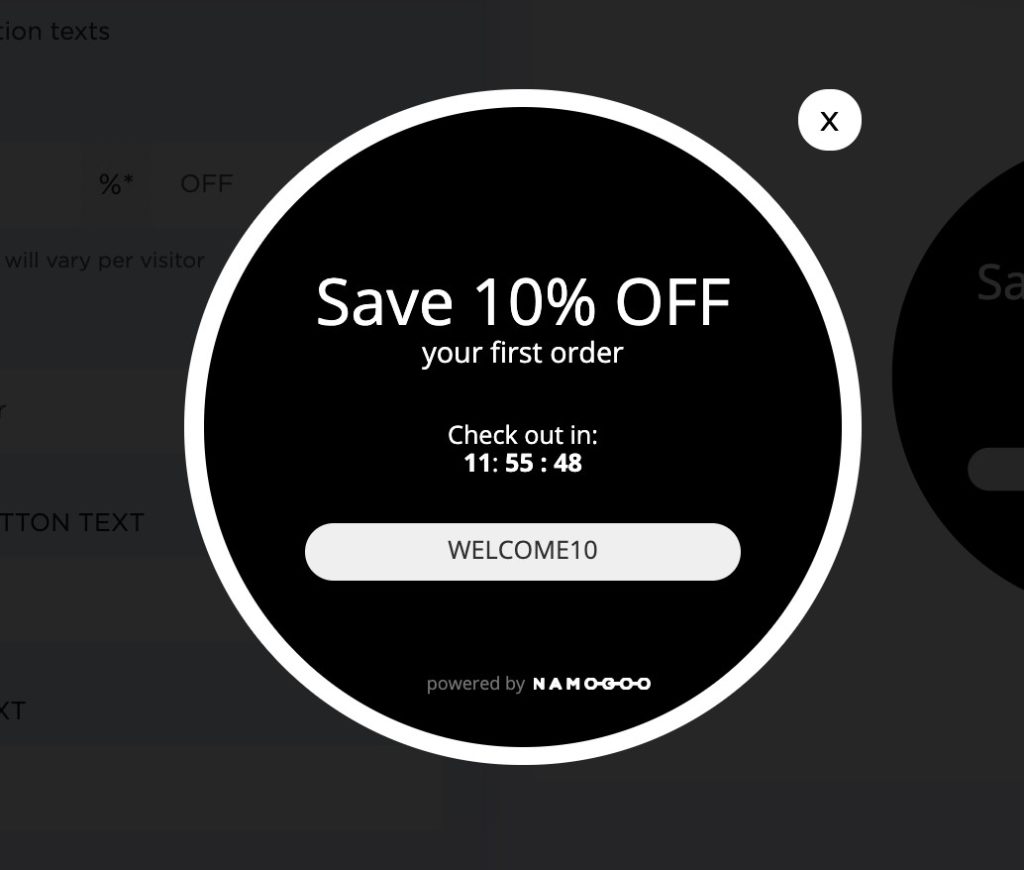
Tip : Trigger urgency and reduce abandoned carts with a countdown timer.
Result
Watch your conversion rate improve and push each session to its full potential.
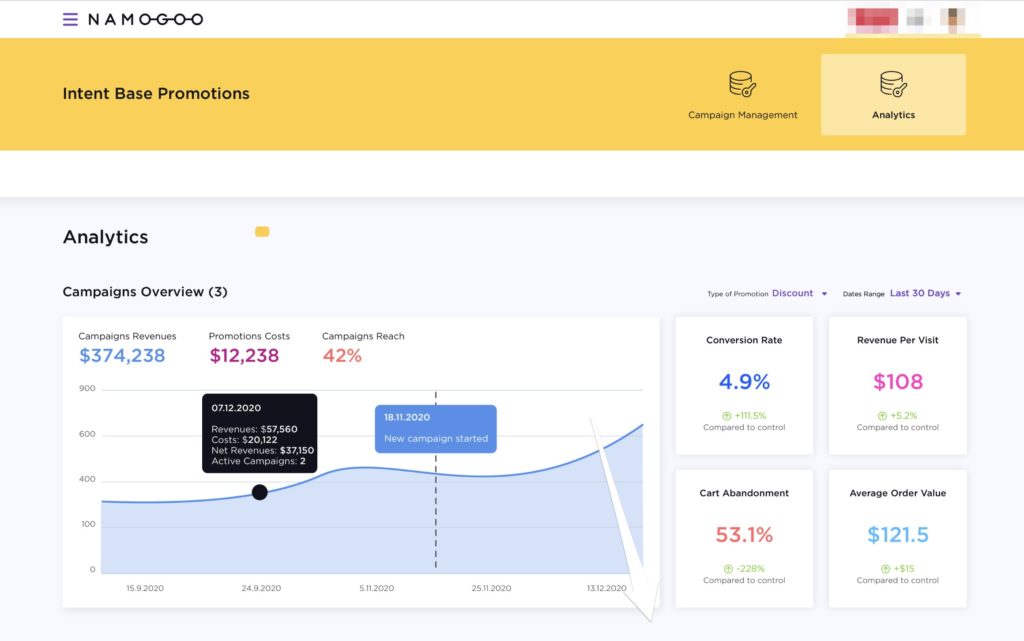
#2. Harness User Momentum and Reduce Shopping Cart Abandonment Rates
Campaign Goal: Reduce Shopping Cart Abandonment
Benchmark: Look for a decrease in cart abandonment rate between 5-15%
When your customers are browsing your site and they put an item in their digital shopping cart, this is a pivotal moment in their customer journey.
Their purchase propensity accelerates, and by adding products to their digital cart, the customer is gaining momentum.
This is a powerful moment to keep them engaged until they convert, and this is especially important during Black Friday and Cyber Monday, when distractions and competition is at an all-time high.
Data collected from the sessions of 250 top online retailers shows that 74% of customers shopping from their mobile devices abandon their carts compared to 61% of desktop users.
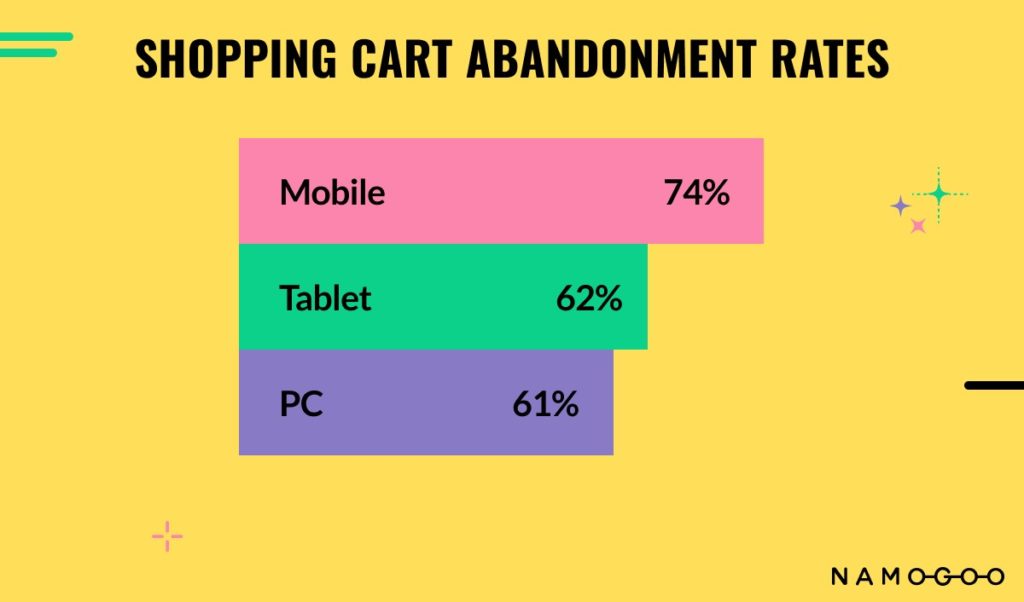
Namogoo customers saw an average abandonment reduction of 15% by using ai-powered behavioral segmentation through Intent-Based Promotions:
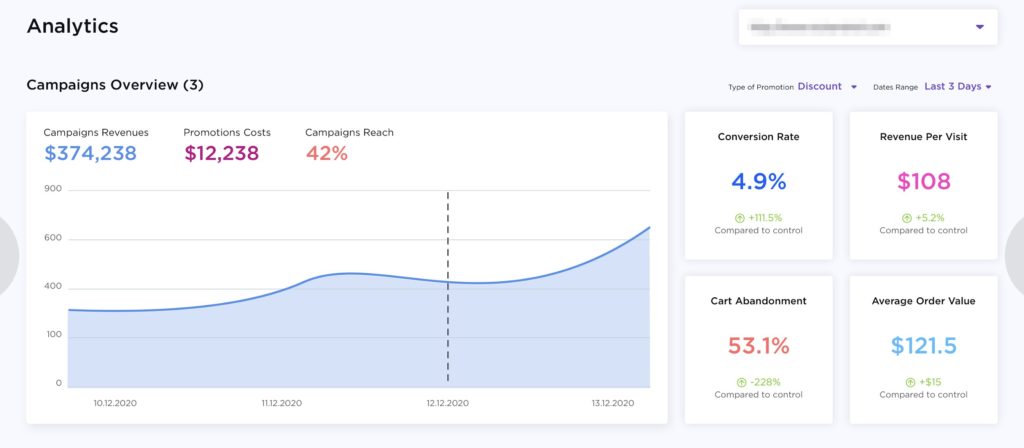
And you can see results like this too.
How to Do It
There are numerous ways to reduce shopping cart abandonment rate onsite (17 strategies, to be exact), and many more to recover those carts that have already been abandoned.
But the most effective way to cut through the noise of BFCM and play into the psychology of your visitors is to leverage the power of customer intent through Intent-Based Promotions.
Step 1: Request access to Intent-Based Promotions and start a new campaign. Select the “Decrease Cart Abandonment” Goal.
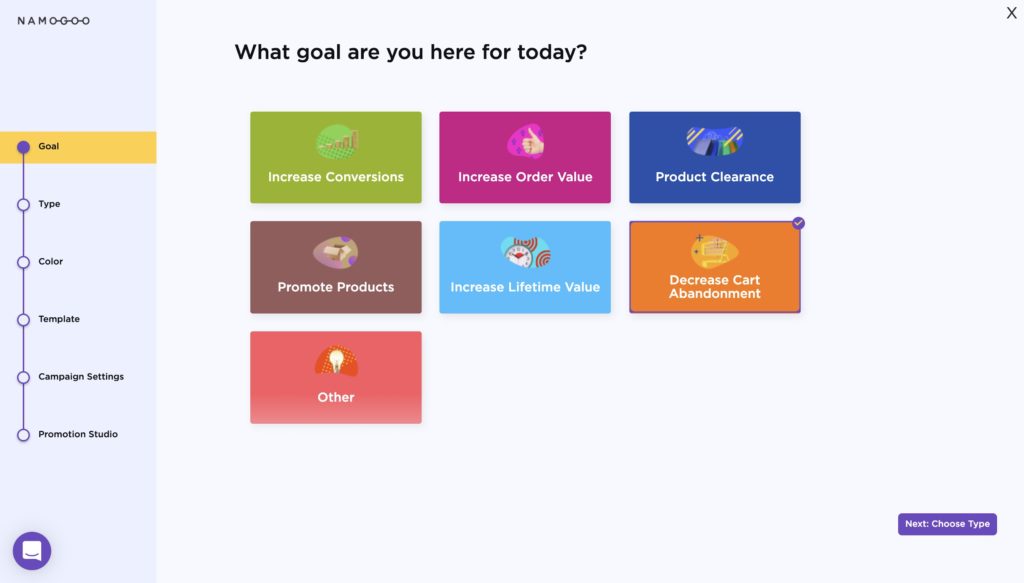
Step 2: Choose a campaign type > Cart Abandonment > Select “Discount”

Choose your template and main color or customize your own promotion
Step 3: Choose your minimum and maximum discount and input the threshold under Discount Range
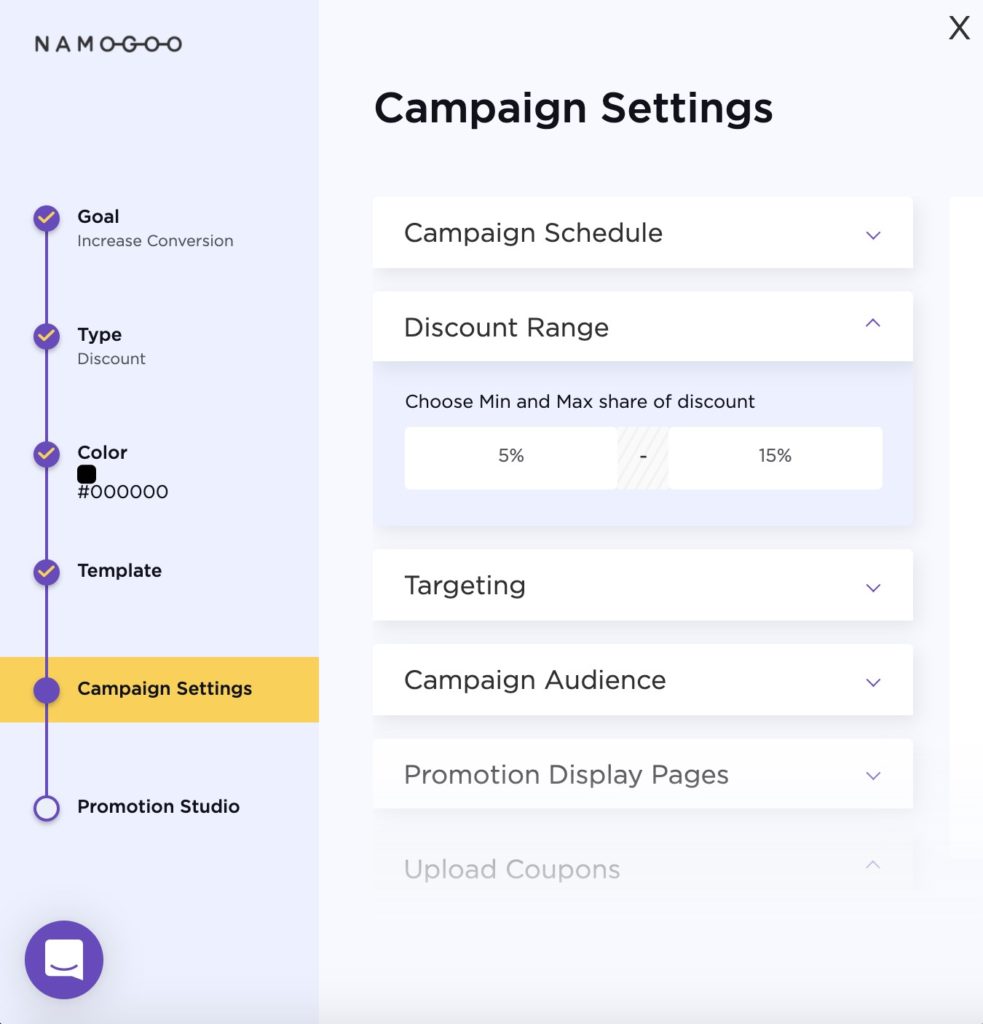
Tip: Use the profitability calculator to determine the maximum discount per channel
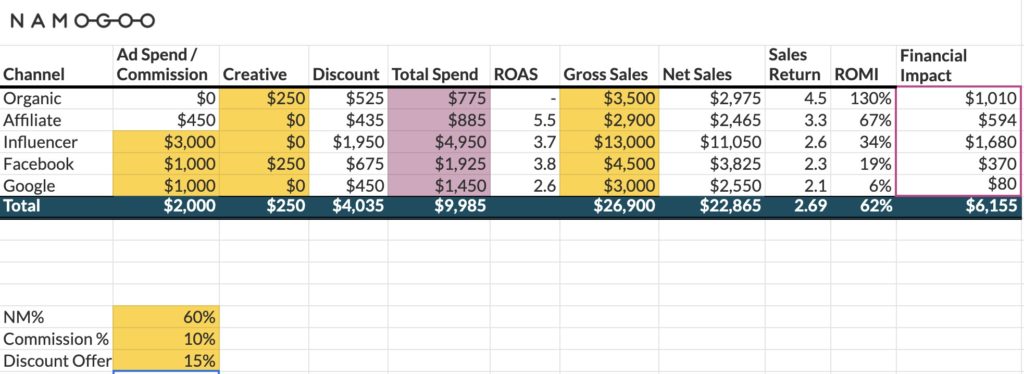
Step 4: Set the Campaign Audience
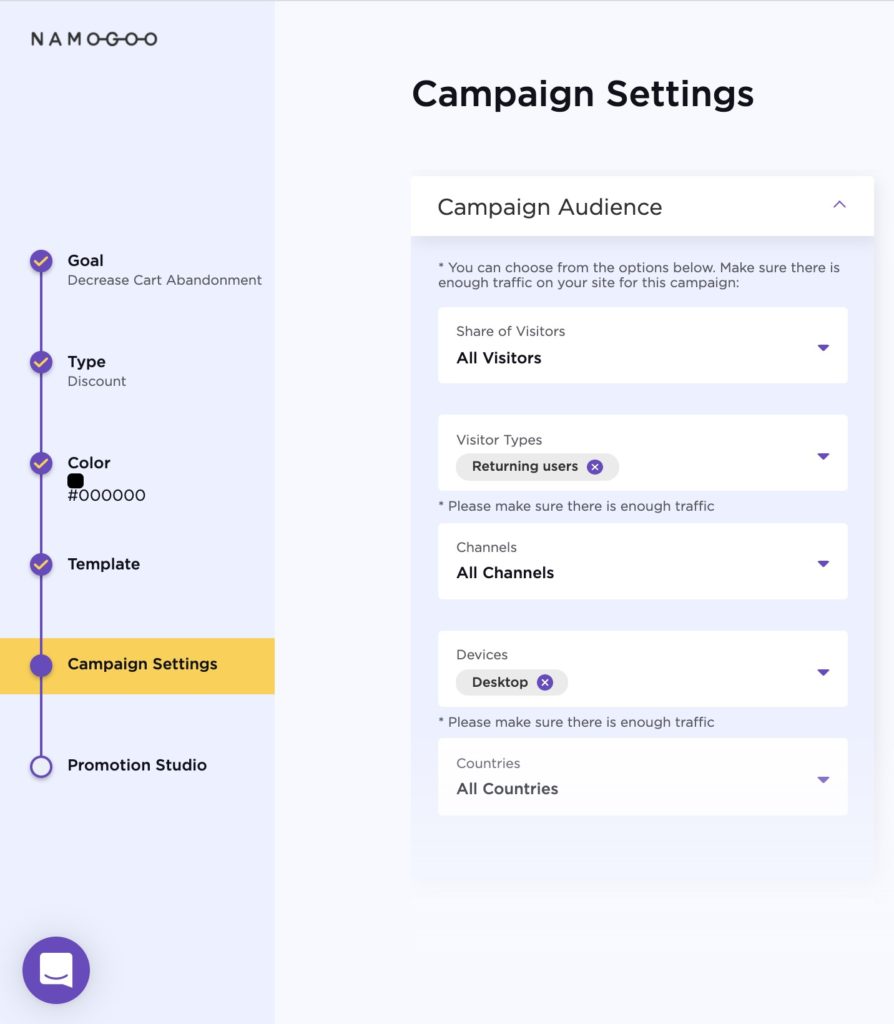
Step 5: Select the Promotion Display Pages
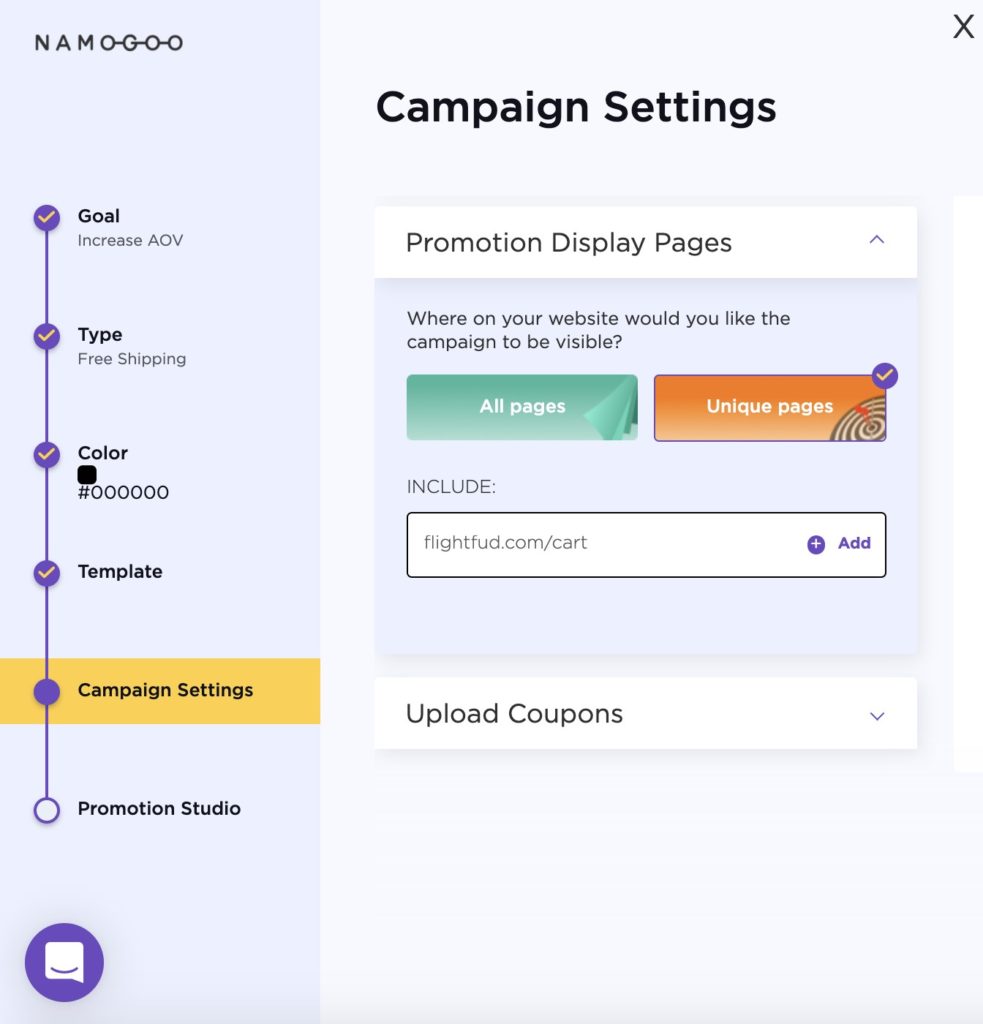
Tip: Set this promotion to display on the cart page so when the visitor is about to abandon, they’re presented with the incentive.
Step 6: Customize & publish
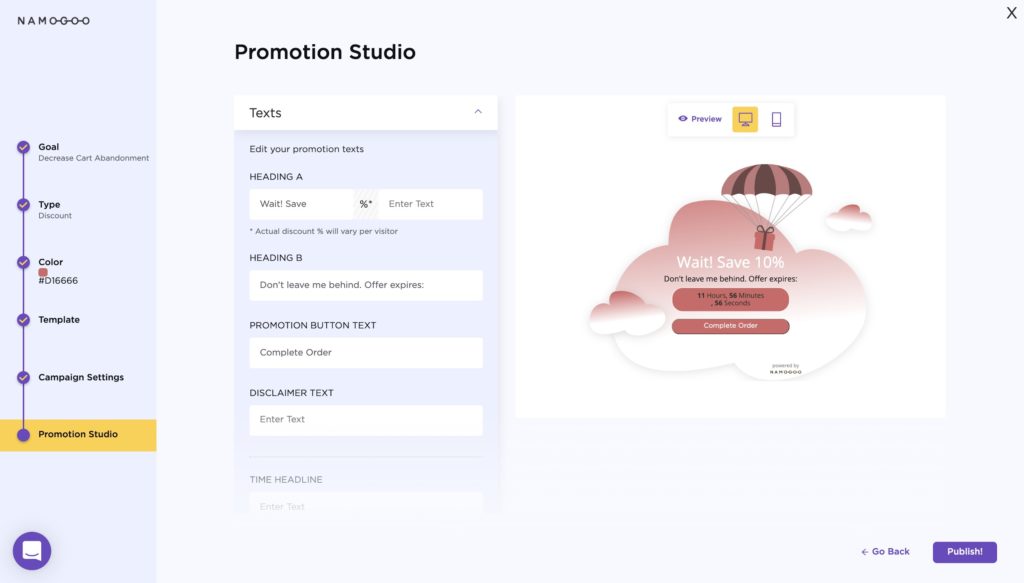
Preview
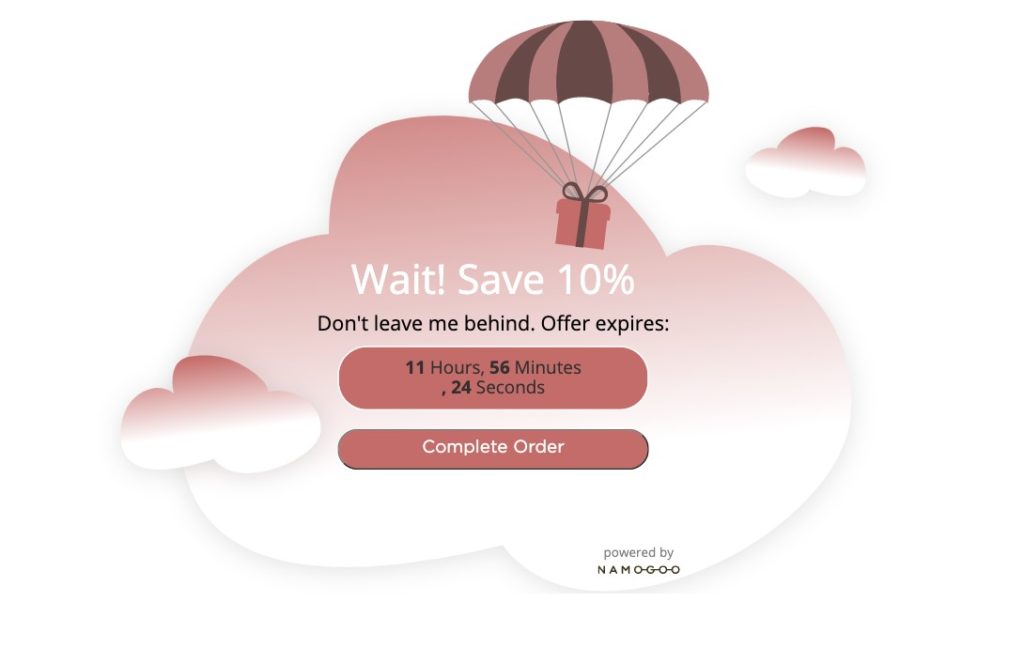
Tip: Trigger urgency with a countdown timer
Result
Watch your cart abandonment rate decrease and capture your visitor’s shopping momentum.
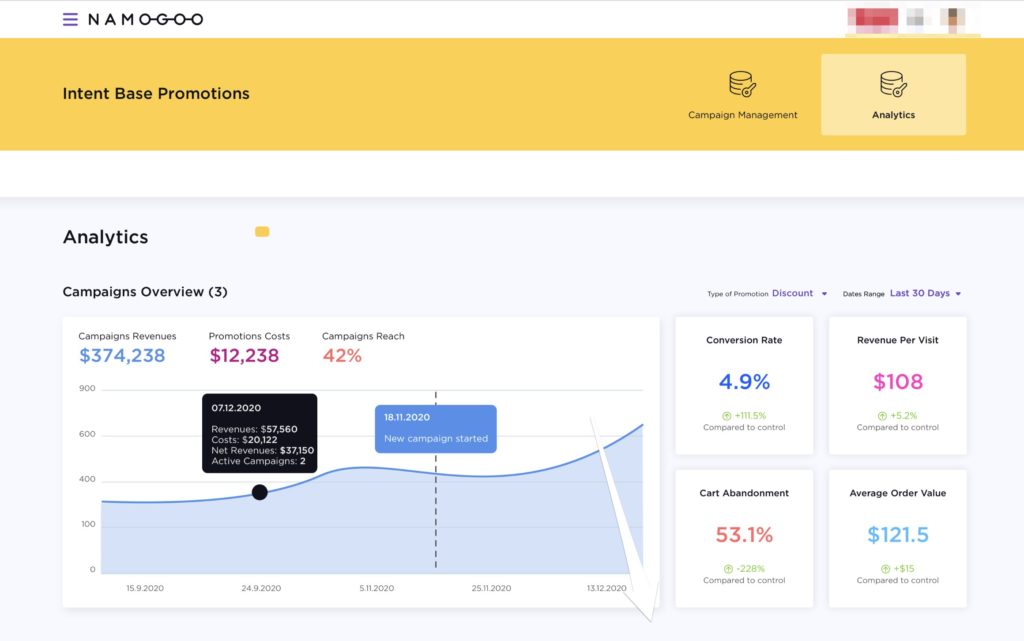
#3. Make Each Conversion More Fruitful by Increasing Average Order Value
Campaign Goal: Increase Average Order Value
Benchmark: Look for an improvement in AOV of between 10-20% for the Black Friday shopping weekend.
Major increase in traffic, improved conversion rates, reduced shopping cart abandonment rate…
Next up in the Cyber Weekend optimization list?
Capturing more revenue per conversion by initiating an intent-based campaign to drive average order value.
Because average order value is a metric that exists at the bottom of the conversion funnel, with customers with high purchase intent, increasing AOV (even by just 10%) has a massive impact on revenue, and is easier than increasing conversions by the same amount.
So why not capitalize on shoppers with higher intent and motivate them to buy more?
You can do this onsite on Black Friday through (you guessed it!) intent-based marketing.
The idea behind this campaign is to only display AOV-building promotions to those most likely to take advantage of them.
Then, your product-focused browser who came for one thing and one thing only won’t be distracted by a promotion that won’t incentivize them to convert…
And those whose intent signals suggest they are open to trying new products or snagging an add-on item will be incentivized to increase their cart value.
This Namogoo customer personalized the promotions offered to each session with Intent-Based Promotions:

Not only did they increase their revenue per visit by $4 (that’s 240%!) for this one promotion campaign alone, but this eCommerce retailer also saw a 228% increase in conversion rate.
Other customers saw 7-11% increases in revenue per visitor:
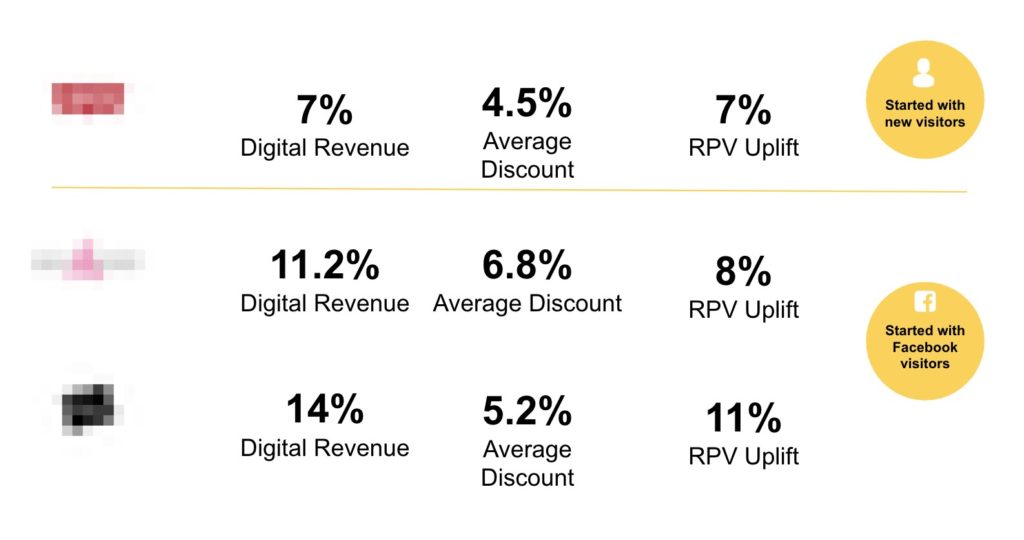
Making this a secret weapon in your BFCM toolkit.
How to Do It
One way to increase AOV and protect your eCommerce margins is by implementing a “free shipping threshold” — a minimum order threshold that unlocks free or reduced-rate shipping.
Here’s how you can do that only for those who would be incentivized to convert with this promotion.
Step 1: Request access to Intent-Based Promotions and start a new campaign. Select the “Increase Order Value” Goal.
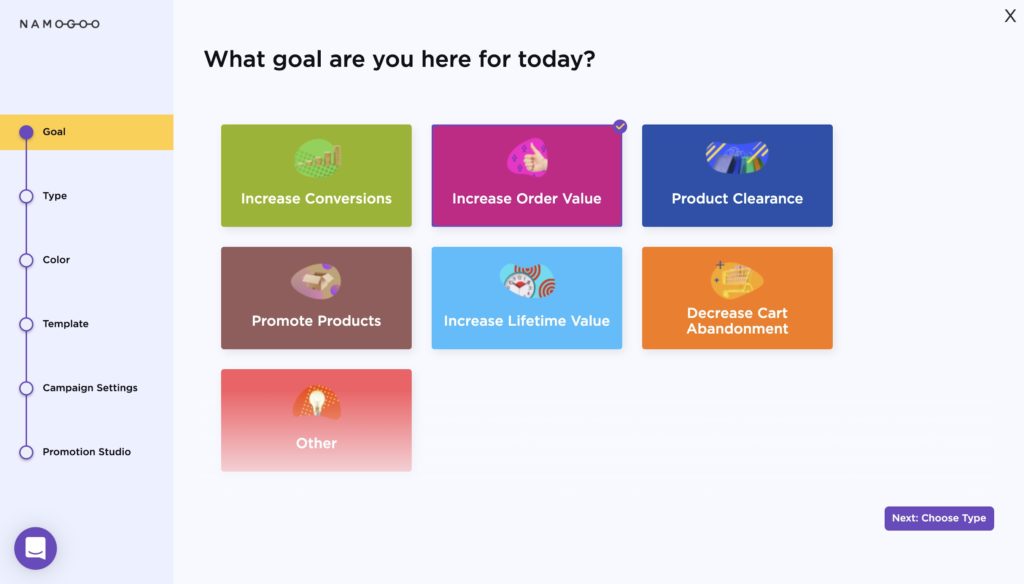
In the future, you’ll be able to set purchase amount limits and IBP will offer the maximum amount to increase AOV.
Step 2: Choose a campaign type: Free Shipping


Choose your template and main colors or customize your own promotion
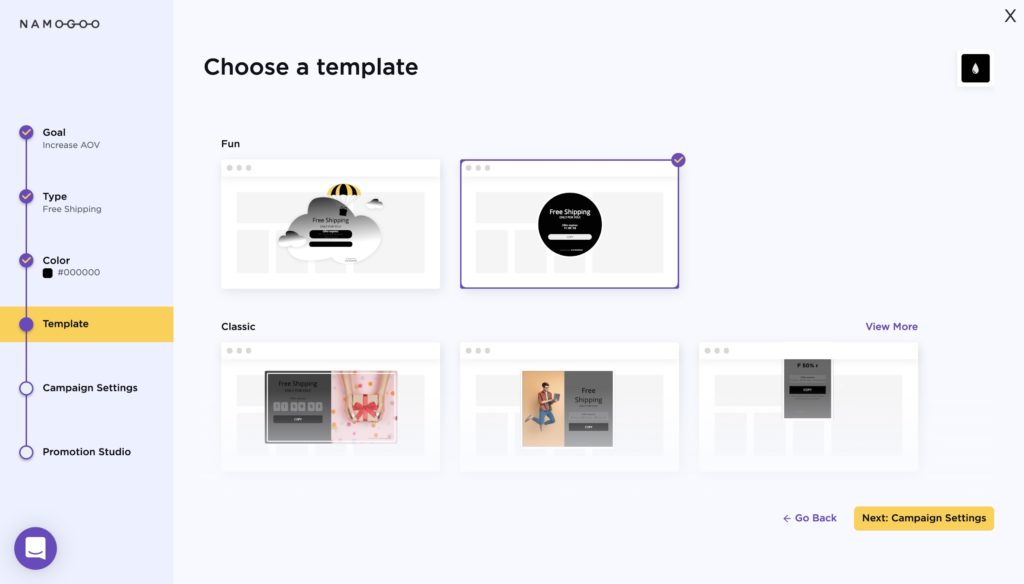
Step 3: Choose your threshold for free shipping

Input the threshold under Targeting > Cart Value
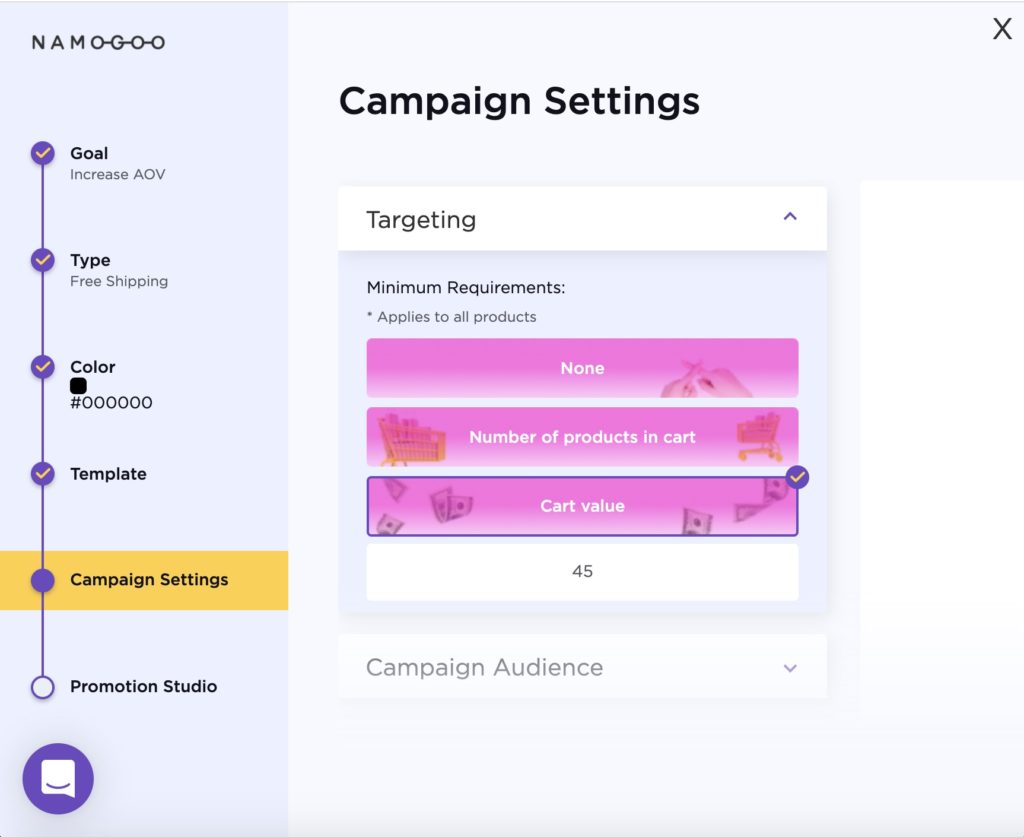
Tip: Choose a threshold above your current AOV.
Step 4: Select the campaign audience or leave it up to IBP’s “promotional brain” to decide.
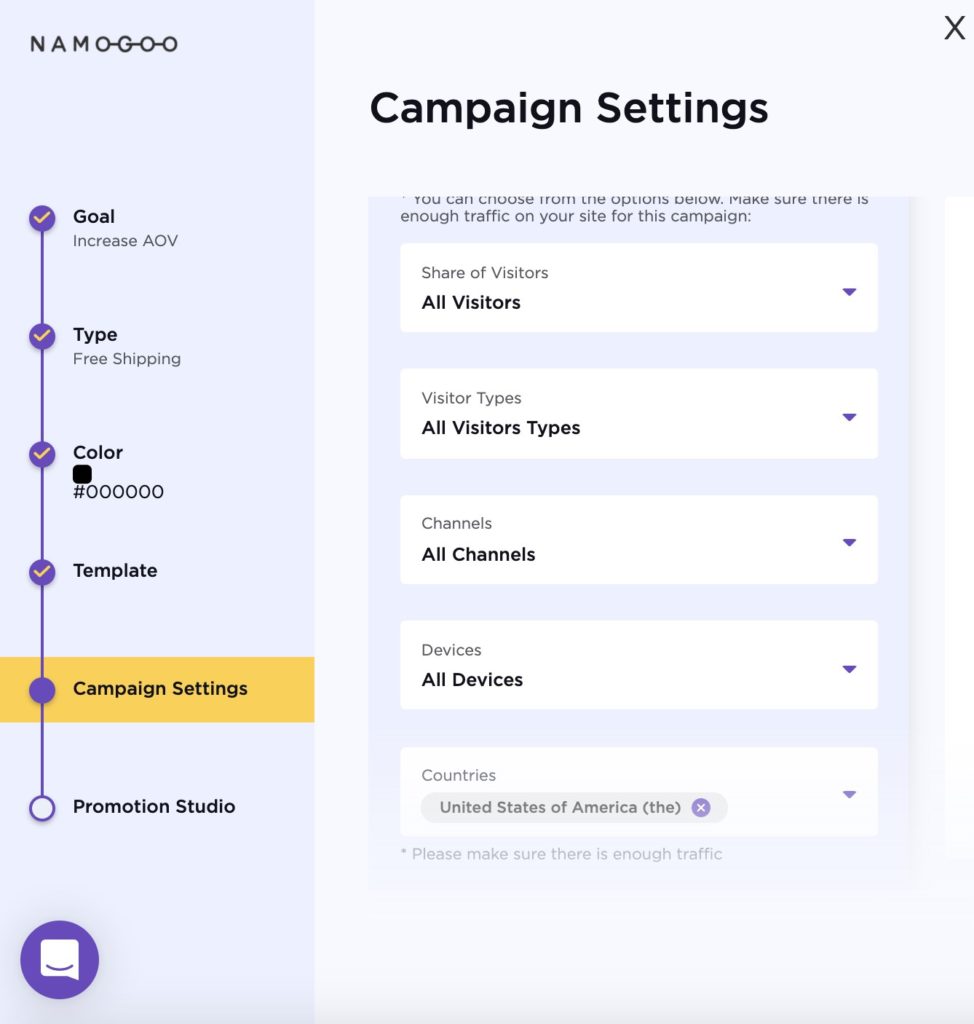
Tip: Be aware of the impact on margins when offering free shipping outside of your country.
You can create different campaigns according to different countries and IBP’s “brain” will display each promotion only to customers who are likely to convert at the right time.
Step 5: Either let the machine decide when it’s the right time to give that extra push to convert (recommended) or select the promotion display pages.
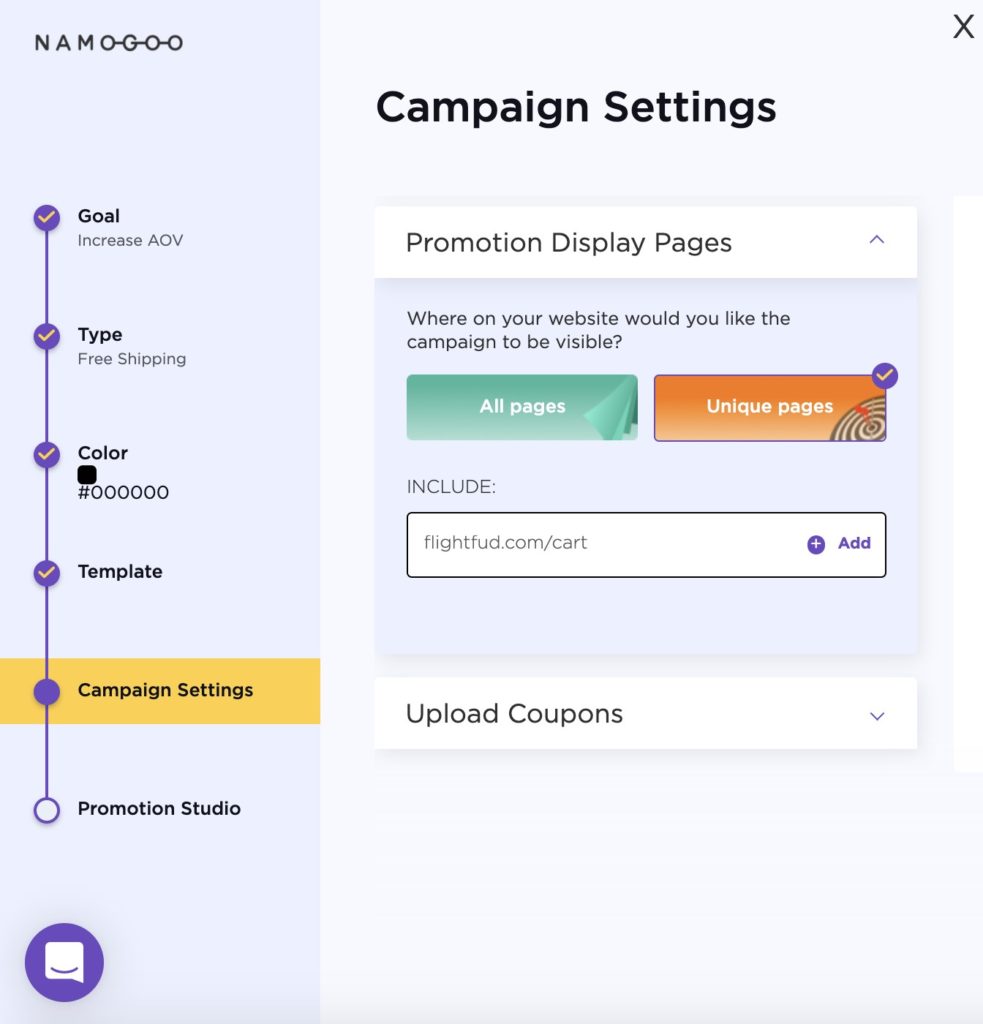
Step 6: Customize & Publish!
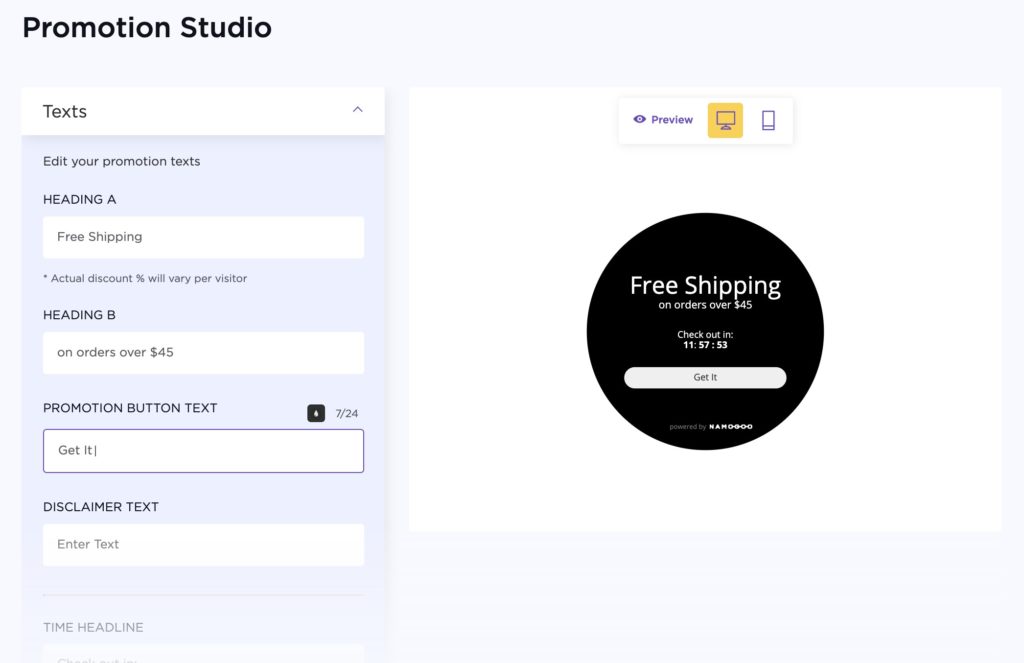
Preview

Result
Watch your average order value and skyrocket and earn more revenue per visitor.
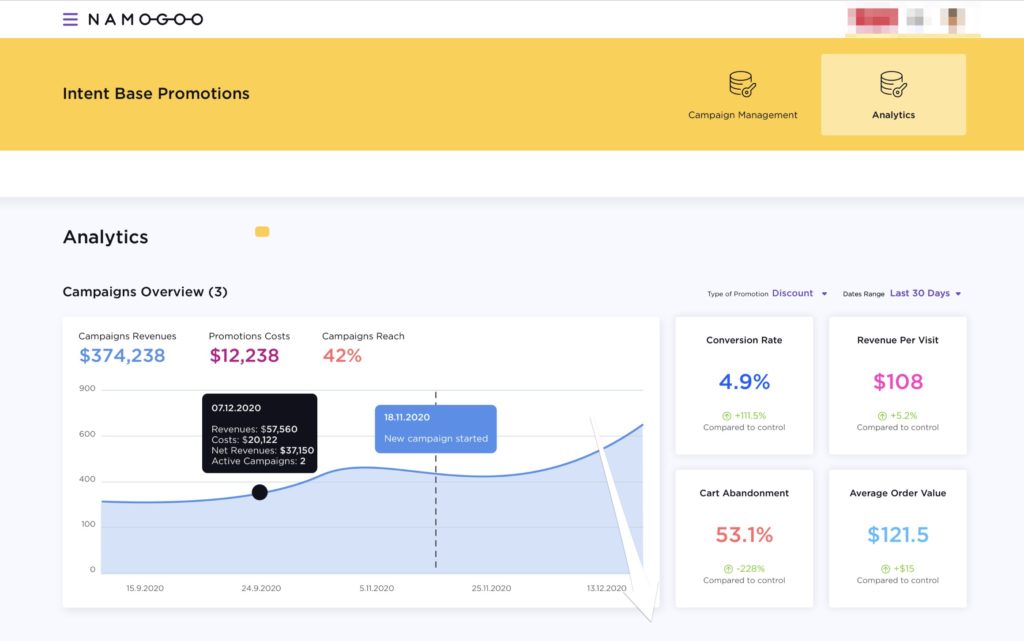
Plan Your Best Cyber Weekend Yet with Intent-Based Promotions
The weekend after Thanksgiving doesn’t have to be the weekend that “margins go to die.”
If you optimize your conversion funnel and take a strategic, intent-based approach to your Cyber Weekend sales promotions, Black Friday and Cyber Monday can be a rich opportunity to acquire loyal customers.
Customers who will refer their friends, engage with your brand, and return to buy again and again.
Request a free trial now to get a head start on your Cyber Weekend promotional plans.



